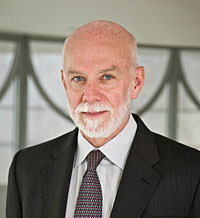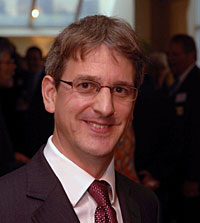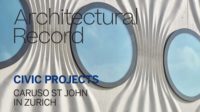|
|
The appointment last Tuesday of Richard Armstrong as the Solomon R. Guggenheim Foundation’s fifth director not only capped a momentous week for the institution—which also celebrated the completion of a three-year restoration project of its famous Frank Lloyd Wright building—but brought to a close what turned out to be an eventful month for several leading art museums. Earlier in September, the Guggenheim’s neighbor on New York’s Museum Mile, the Metropolitan Museum of Art (Met), selected Thomas P. Campbell as its new director. The next day, the Philadelphia Museum of Art announced the formation of a search committee charged with selecting a successor to Anne d’Harnoncourt, its director who died on June 1, 2008.
In each of these cases, the new director will be taking over from illustrious predecessors. d’Harnoncourt—one of a few women ever to sit at the helm of a major art museum—had been with the Philadelphia Museum for more than 35 years, serving as its leader since 1982. Campbell’s predecessor, Philippe de Montebello, led the Met for 31 years. Both esteemed art historians, d’Harnoncourt and de Montebello lent an aristocratic air to their respective institutions while quietly expanding their museum’s collections and overseeing major exhibitions and thoughtful gallery renovations. On the other hand, Thomas Krens—the provocative Guggenheim director for the past two decades—was a larger-than-life figure who turned the Guggenheim into a global brand with stunning outposts, built and unbuilt, in Bilbao, Berlin, Rio de Janeiro, and Las Vegas (the Rem Koolhaas-designed branch which closed in May), while organizing controversial shows like 1998’s “The Art of the Motorcycle.”
“The search process is a time-consuming one that can take anywhere from six months to a year,” explains Millicent Gaudieri, the executive director of the Association of Art Museum Directors (AAMD). “Public institutions need to cast as wide a net as possible.” Even so, by choosing Campbell—a curator in the Met’s Department of European Sculpture and Decorative Arts—the museum kept with its long tradition of promoting from within its curatorial ranks, as all but two directors in over a century were similarly promoted.
Yet with each selection process comes much speculation. Max Hollein, the 39-year-old son of Pritzker Prize-winning architect Hans Hollein and director of Frankfurt’s Städel Museum, was thought to be a frontrunner at both the Met and at the Guggenheim, where he worked closely with Krens for many years. The selection of Armstrong, 59—whom the Guggenheim describes as a diplomatic and sophisticated citizen of the global art world—marks a dramatic shift for the museum following Krens’ tumultuous tenure, or at least that is the consensus among museum watchers.
“Some of the press have presented these recent appointments, even me, as staid figures,” Armstrong jokes, “but believe me, we wouldn’t be successful today if we hadn’t adapted to the times. It’s probably somewhat inaccurate to think that because someone is a great scholar of tapestries, he doesn’t know anything about anything else.” With his humor, optimism, and straightforward talk, the nearly 6 ½-foot-tall Armstrong seems poised to lead the Guggenheim on a path of continued growth, both for its newly restored New York flagship and for additional expansions, including a planned 450,000-square-foot Frank Gehry building in Abu Dhabi. Despite some of the criticism lobbed at Krens for his global building projects, Armstrong supports those efforts. “These projects are a symbol to me of the entrepreneurial health of the institution, and I can imagine future such endeavors.”
Armstrong also calls himself a devoté of architecture. “I think one of the most important aspects of our understanding art better, particularly in today’s society, is understanding architecture better.” He points to the Guggenheim’s strong track record in promoting architecture, not just with exhibitions, but in commissioning architects for projects. Coincidentally, a major Frank Lloyd Wright exhibition is in the works at the New York location for spring 2009 to celebrate the building’s 50th anniversary. “You can imagine how spectacular that could be framed inside one of his greatest structures,” Armstrong predicts.
As the Guggenheim and the Met assume new leadership—on November 4, 2008, and January 1, 2009, respectively—the Philadelphia Museum is not commenting on its search, though it acknowledges that a search firm to assist in the process will be named at a later date. (Phillips Oppenheim, an executive search firm for nonprofit organizations, did the job for both the Met and the Guggenheim.) The new director there will inherit a significant building project with which Ms. d’Harnoncourt had been deeply involved, also designed by Frank Gehry. The AAMD currently lists 16 other art museums around the country with open directorships, including the Tampa Museum of Art, the Seattle Art Museum, the Hirshhorn Museum and Sculpture Garden in Washington, D.C., and Armstrong’s home until November 3, Pittsburgh’s Carnegie Museum of Art.







Post a comment to this article
Report Abusive Comment